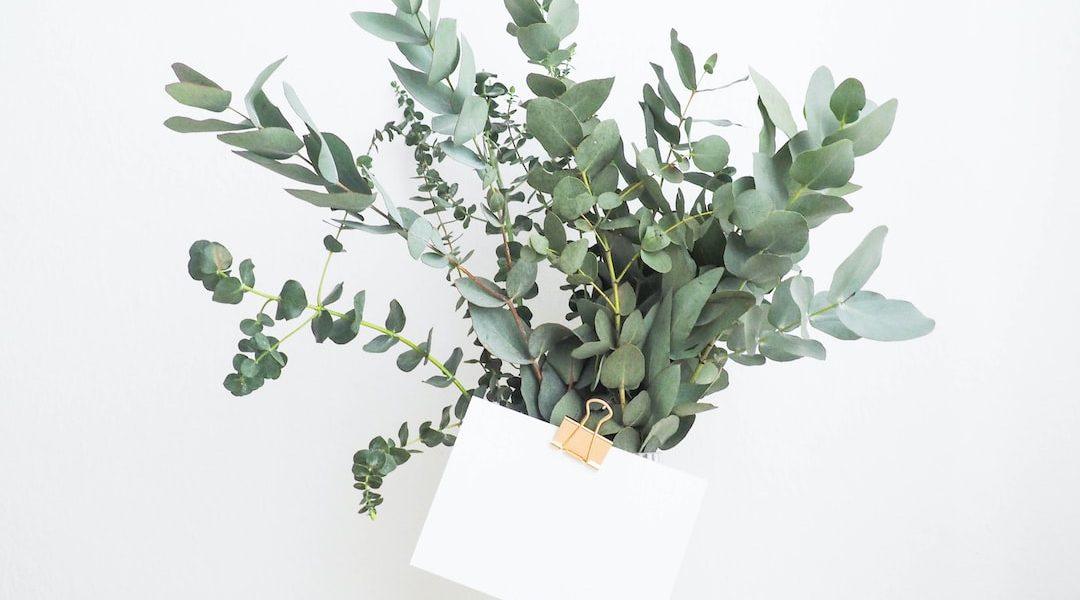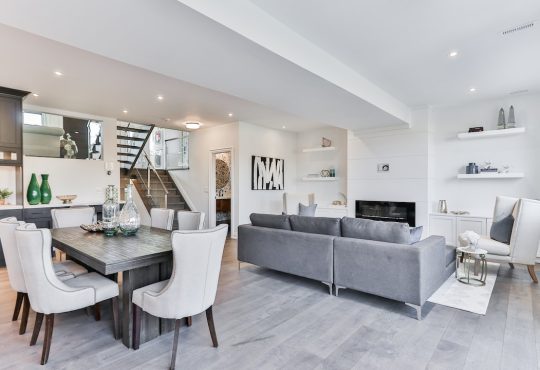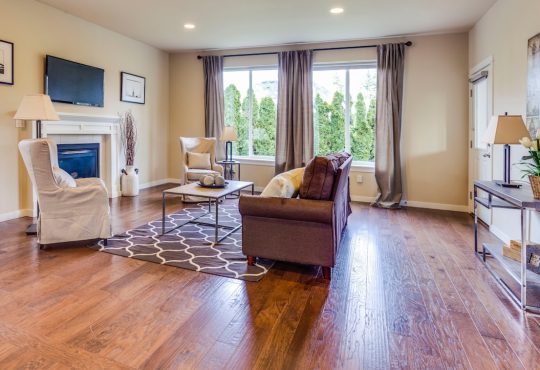
Bringing the Outdoors In: A Comprehensive Guide to Incorporating Indoor Plants in Home Decor
Indoor plants have become an essential part of home decor in recent years. Not only do they enhance the aesthetic appeal of your home, but they also offer a range of benefits for your health and well-being. From improving air quality to boosting mood and productivity, indoor plants have a positive impact on our lives. In this article, we will explore why indoor plants are essential for home decor and discuss the different types of plants and their benefits. We will also provide tips for choosing the right indoor plants for your home, caring for them, and creative ways to display them.
Why Indoor Plants are Essential for Home Decor
A. Enhance the aesthetic appeal of your home
One of the main reasons why indoor plants have become so popular in home decor is their ability to enhance the aesthetic appeal of any space. Whether you have a modern or traditional style, there is a wide variety of indoor plants that can complement your existing decor. From small succulents to large ferns, indoor plants add a touch of greenery and life to any room.
B. Improve air quality
Indoor air pollution is a growing concern, especially in urban areas where we spend most of our time indoors. Indoor plants are natural air purifiers that can help improve the air quality in your home. They absorb carbon dioxide and release oxygen, making the air fresher and cleaner. Some indoor plants, such as peace lilies and spider plants, are particularly effective at removing toxins like formaldehyde and benzene from the air.
C. Boost mood and productivity
Numerous studies have shown that being around nature has a positive impact on our mood and overall well-being. Indoor plants can help create a sense of calm and tranquility in your home, reducing stress and anxiety. They also have a positive effect on productivity and concentration, making them ideal for home offices or study areas.
D. Reduce stress and anxiety
In addition to boosting mood and productivity, indoor plants have been found to reduce stress and anxiety. The presence of plants in a room can create a soothing and relaxing atmosphere, helping to create a sense of peace and tranquility. Taking care of indoor plants can also be a form of mindfulness and a way to connect with nature, which has been shown to have numerous mental health benefits.
Types of Indoor Plants and Their Benefits
A. Succulents
Succulents are a popular choice for indoor plants due to their low maintenance requirements and unique appearance. They come in a variety of shapes, sizes, and colors, making them versatile for any home decor style. Succulents are known for their ability to store water in their leaves, making them drought-tolerant and easy to care for. They also help improve air quality by releasing oxygen at night, making them ideal for bedrooms.
B. Ferns
Ferns are another popular choice for indoor plants due to their lush green foliage and ability to thrive in low-light conditions. They add a touch of elegance and freshness to any room. Ferns are known for their air-purifying properties, as they can remove toxins like formaldehyde and xylene from the air. They also help increase humidity levels, making them ideal for dry environments.
C. Snake plants
Snake plants, also known as mother-in-law’s tongue, are one of the easiest indoor plants to care for. They have long, upright leaves that come in various shades of green and yellow. Snake plants are known for their ability to purify the air by removing toxins like formaldehyde and benzene. They are also excellent at producing oxygen at night, making them ideal for bedrooms.
D. Pothos
Pothos, also known as devil’s ivy, is a popular choice for indoor plants due to its trailing vines and heart-shaped leaves. It is a low-maintenance plant that can thrive in a variety of lighting conditions. Pothos is known for its ability to remove toxins like formaldehyde and benzene from the air, making it a great choice for improving indoor air quality.
E. Spider plants
Spider plants are known for their long, arching leaves and small white flowers. They are easy to care for and can tolerate a wide range of lighting conditions. Spider plants are excellent at removing toxins like formaldehyde and carbon monoxide from the air, making them ideal for improving indoor air quality. They also produce oxygen and increase humidity levels, making them beneficial for overall health and well-being.
F. Benefits of each type of plant
Each type of indoor plant has its own unique benefits. Succulents are low maintenance and help improve air quality. Ferns add elegance and freshness to any room while purifying the air. Snake plants are easy to care for and produce oxygen at night. Pothos remove toxins from the air and thrive in various lighting conditions. Spider plants remove toxins, produce oxygen, and increase humidity levels.
Choosing the Right Indoor Plants for Your Home
A. Consider lighting and temperature
When choosing indoor plants for your home, it is important to consider the lighting and temperature conditions in each room. Some plants require bright, indirect light, while others can tolerate low-light conditions. Similarly, some plants prefer warmer temperatures, while others thrive in cooler environments. By understanding the lighting and temperature requirements of different plants, you can choose ones that will thrive in your home.
B. Determine the size of the plant
Another factor to consider when choosing indoor plants is the size of the plant. Some plants, like succulents and small ferns, are compact and can fit on a windowsill or small shelf. Others, like snake plants and large ferns, require more space and can be used as statement pieces in larger rooms. By determining the size of the plant, you can choose ones that will fit well in your space.
C. Choose plants that fit your lifestyle
It is also important to choose indoor plants that fit your lifestyle and level of commitment. Some plants require more care and attention, while others are more forgiving and can tolerate neglect. If you have a busy schedule or travel frequently, it may be best to choose low-maintenance plants that can thrive with minimal care. On the other hand, if you enjoy gardening and have the time to devote to plant care, you can choose more high-maintenance plants.
Tips for Caring for Indoor Plants
A. Watering
Proper watering is essential for the health and well-being of indoor plants. Most indoor plants prefer to be watered when the top inch of soil is dry. It is important to avoid overwatering, as this can lead to root rot and other issues. On the other hand, underwatering can cause the plant to wilt and die. It is best to water indoor plants thoroughly and allow the excess water to drain out of the pot.
B. Fertilizing
Indoor plants require regular fertilizing to ensure they receive the necessary nutrients for growth. It is best to use a balanced fertilizer specifically formulated for indoor plants. Follow the instructions on the fertilizer package for proper application rates and frequency. Over-fertilizing can lead to nutrient burn, so it is important to use fertilizers sparingly.
C. Pruning
Pruning is an important part of caring for indoor plants, as it helps promote healthy growth and prevents overcrowding. Regularly remove dead or yellowing leaves, as well as any stems or branches that are growing in an undesirable direction. Pruning also helps maintain the shape and size of the plant.
D. Repotting
Indoor plants may need to be repotted every 1-2 years, depending on their growth rate and size. Repotting allows the plant to have fresh soil and more room for root growth. When repotting, choose a pot that is slightly larger than the current one and use a well-draining potting mix. Be careful not to damage the roots when removing the plant from its current pot.
Creative Ways to Display Indoor Plants
A. Hanging plants
Hanging plants are a great way to add greenery to your home without taking up valuable floor or counter space. They can be hung from the ceiling or mounted on a wall using hooks or brackets. Hanging plants can create a dramatic effect and add visual interest to any room.
B. Wall-mounted planters
Wall-mounted planters are another creative way to display indoor plants. They can be mounted on any wall, creating a living wall effect. Wall-mounted planters come in a variety of styles and sizes, allowing you to create a unique and personalized display.
C. Terrariums
Terrariums are small, enclosed glass containers that create a mini ecosystem for plants. They are a great way to display small succulents or air plants and can be placed on tabletops or shelves. Terrariums come in various shapes and sizes, allowing you to create a unique and eye-catching display.
D. Plant stands
Plant stands are a classic way to display indoor plants and can be used in any room of your home. They come in a variety of styles and materials, allowing you to choose ones that complement your existing decor. Plant stands can be used to elevate plants and create visual interest in any space.
Incorporating Indoor Plants in Different Rooms of Your Home
A. Living room
The living room is often the focal point of the home, making it an ideal place to incorporate indoor plants. Large statement plants, such as fiddle leaf figs or monstera deliciosa, can be placed in corners or next to furniture to create a dramatic effect. Smaller plants, such as succulents or pothos, can be placed on coffee tables or shelves to add a touch of greenery.
B. Bedroom
The bedroom is a space where we go to relax and unwind, making it an ideal place for indoor plants. Plants that produce oxygen at night, such as snake plants or peace lilies, can be placed on bedside tables or dressers to improve air quality while we sleep. Hanging plants or wall-mounted planters can also be used to add greenery without taking up valuable floor space.
C. Kitchen
The kitchen is often a busy and functional space, but it can also benefit from the presence of indoor plants. Herbs, such as basil or mint, can be grown in small pots on windowsills or countertops, providing fresh ingredients for cooking. Hanging plants or wall-mounted planters can also be used to add greenery and visual interest to the kitchen.
D. Bathroom
The bathroom is a space that is often overlooked when it comes to indoor plants, but it can greatly benefit from their presence. Plants that thrive in high humidity environments, such as ferns or orchids, can be placed on countertops or shelves to add a touch of greenery. Hanging plants or wall-mounted planters can also be used to create a unique and eye-catching display.
How to Use Indoor Plants to Create a Natural Ambience
A. Use plants to create a natural focal point
Indoor plants can be used to create a natural focal point in any room. Large statement plants, such as palm trees or fiddle leaf figs, can be placed in corners or next to furniture to draw the eye and create visual interest. Smaller plants can be grouped together on a tabletop or shelf to create a mini garden effect.
B. Combine plants with natural materials
To create a natural ambience in your home, consider combining indoor plants with natural materials. Use wooden planters or baskets to display plants, and incorporate natural textures like jute or rattan in your decor. This will create a cohesive and organic look that brings the outdoors inside.
C. Use plants to create a calming atmosphere
Indoor plants have a calming effect on our minds and bodies, making them ideal for creating a peaceful and tranquil atmosphere in your home. Place plants in areas where you spend a lot of time, such as the living room or bedroom, to create a sense of calm and relaxation. You can also use scented plants, such as lavender or jasmine, to add an extra layer of tranquility.
Indoor Plants for Small Spaces and Apartments
A. Small plants that fit in tight spaces
If you have limited space in your home or apartment, there are plenty of small indoor plants that can fit in tight spaces. Succulents, air plants, and small ferns are all great options for small spaces. They can be placed on windowsills, countertops, or shelves to add a touch of greenery without taking up valuable floor space.
B. Vertical gardens
Vertical gardens are a great way to maximize space and add greenery to small spaces. They can be created using wall-mounted planters or hanging pots that are attached to a vertical structure. Vertical gardens can be placed indoors or outdoors and can be customized to fit any space.
C. Hanging plants
Hanging plants are another great option for small spaces and apartments. They can be hung from the ceiling or mounted on a wall using hooks or brackets. Hanging plants not only add greenery but also create visual interest and make use of vertical space.
The Best Indoor Plants for Air Purification
A. Peace lily
Peace lilies are one of the best indoor plants for air purification. They are known for their ability to remove toxins like formaldehyde, benzene, and carbon monoxide from the air. Peace lilies also help increase humidity levels, making them beneficial for overall health and well-being.
B. Spider plant
Spider plants are excellent at removing toxins like formaldehyde and carbon monoxide from the air. They also produce oxygen and increase humidity levels, making them ideal for improving indoor air quality. Spider plants are easy to care for and can tolerate a wide range of lighting conditions.
C. Snake plant
Snake plants are known for their ability to purify the air by removing toxins like formaldehyde and benzene. They are also excellent at producing oxygen at night, making them ideal for bedrooms. Snake plants are easy to care for and can tolerate low-light conditions.
D. Bamboo palm
Bamboo palms are excellent at removing toxins like formaldehyde, benzene, and carbon monoxide from the air. They also help increase humidity levels, making them beneficial for overall health and well-being. Bamboo palms are easy to care for and can tolerate a wide range of lighting conditions.
Indoor Plants for Stress Relief and Better Sleep
A. Lavender
Lavender is known for its calming and soothing properties. The scent of lavender has been shown to reduce stress and anxiety, promote relaxation, and improve sleep quality. Placing a lavender plant in your bedroom or using lavender essential oil can help create a calming atmosphere and promote better sleep.
B. Aloe vera
Aloe vera is a succulent plant that has numerous health benefits. It is known for its ability to soothe sun burns and promote healing of wounds. The gel inside the leaves of the aloe vera plant contains vitamins, minerals, and antioxidants that can help reduce inflammation and provide relief from pain. Additionally, aloe vera has been found to have moisturizing properties, making it a popular ingredient in skincare products. It can help hydrate the skin, reduce acne, and improve overall skin health. Aloe vera also has potential benefits for digestion, as it may help alleviate symptoms of irritable bowel syndrome and promote healthy gut bacteria. Furthermore, some studies suggest that aloe vera may have immune-boosting properties and could potentially help lower blood sugar levels in individuals with diabetes. Overall, aloe vera is a versatile plant with a wide range of potential health benefits.
If you’re looking to create a cozy and inviting atmosphere in your home, then you’ll definitely want to check out our related article on “Hygge: The Danish Art of Coziness and Happiness.” This article explores the concept of hygge and provides tips on how to incorporate hygge elements into your home decor. From soft lighting and comfortable furnishings to warm colors and natural materials, discover how to create a space that promotes relaxation and contentment. So, if you’re ready to embrace the hygge lifestyle, click here to read the full article. https://agutonsky.com/hygge-levensstijl-ontdek-de-deense-kunst-van-gezelligheid-en-geluk/



